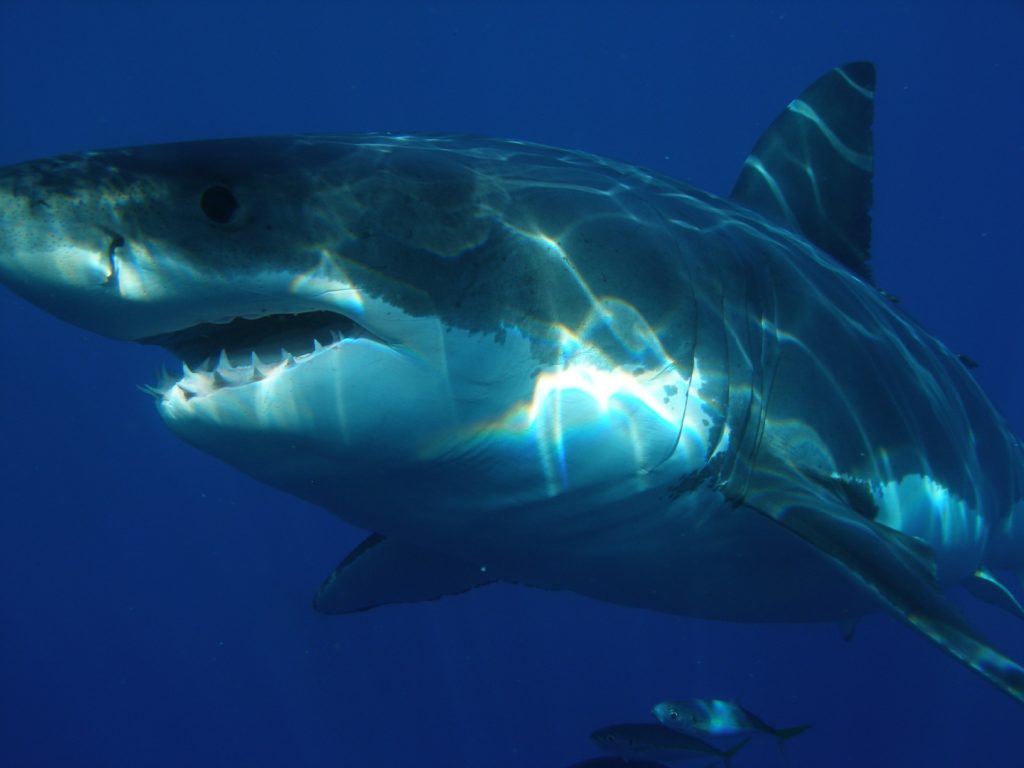Research shows that great white sharks continue to disappear from parts of the Western Cape coast. Two recent studies analysing the coastline captured no footage of these large sharks over a two year period, although smaller sharks were found to be thriving in the environment.
In a two year study, researchers used baited remote underwater videos (BRUVs), a special non-destructive technique used around the world to study marine predators. BRUVS were conducted at 167 sites to assess the frequency of occurrence (FO), relative abundancy, diversity and structure of chondrichthyan (a class that contains cartilaginous fishes like sharks) biodiversity in these hotspots.
Research for the papers was contributed by local fishers and the fishing community of Kogelberg, supported by WWF South Africa. They reviewed a stretch of coastline including coastal towns of Betty’s Bay, Pringle Bay, Kleinmond and Hermanus. This coastline is a hotspot of marine biodiversity and is home to over 60 species of sharks and rays, says WWF South Africa.
During this period no great whites were detected by the footage, says WWF. Most larger sharks (like copper or gully sharks) were largely missing from the footage, which could be a result of historical fisheries targeting these species. However, smaller endemic shark species like the puffadder and pyjama sharks were thriving in this environment. These smaller shark species are in need of greater conservation attention.
“Although in total we observed 18 chondrichthyan species (11 families), over half of all observations were of just two species from the same family of mesopredatory endemic catsharks; only 8.8% were larger shark species. These mesopredatory species do not appear to be threatened, but some skates and larger shark species, including some endemics, were much rarer,” finds the study.
Chondrichthyan’s were witnessed by 81% of all BRUVs and they frequently occurred in kelp (100% of BRUVs) and reef (93% of BRUVs) sites, and much less in sandy habitats (63%).
“Our study provides evidence of the importance of distinct habitat types to different chondrichthyan species, and suggests that even small marine protected areas can protect critical habitats, such that they may provide safe refuge for endemic species as anthropogenic pressures increase,” reads the study.
Chondrichthyans, especially the dark and puffadder catsharks and the broadnose sevengill shark, show strong potential as an umbrella species-complex in South Africa.
The great white shark population has been declining over the years. Few sightings have been reported in hotspot areas like False Bay and Gaansbaai since 2017. In 2020, the first sighting in 20 months was recorded in False Bay.
“As great white sharks continue to disappear along this coast (no great whites were detected on the BRUVs footage), the larger seven-gill shark will be key to promoting marine conservation in the Kogelberg and beyond as it moves into the great white’s old haunts,” says the WWF.
“Should fishing pressure or habitat degradation intensify, these “umbrella” sharks could be used to promote MPAs for the conservation of a variety of the endemic species that make South African oceans unique.”
Picture: Pixabay

